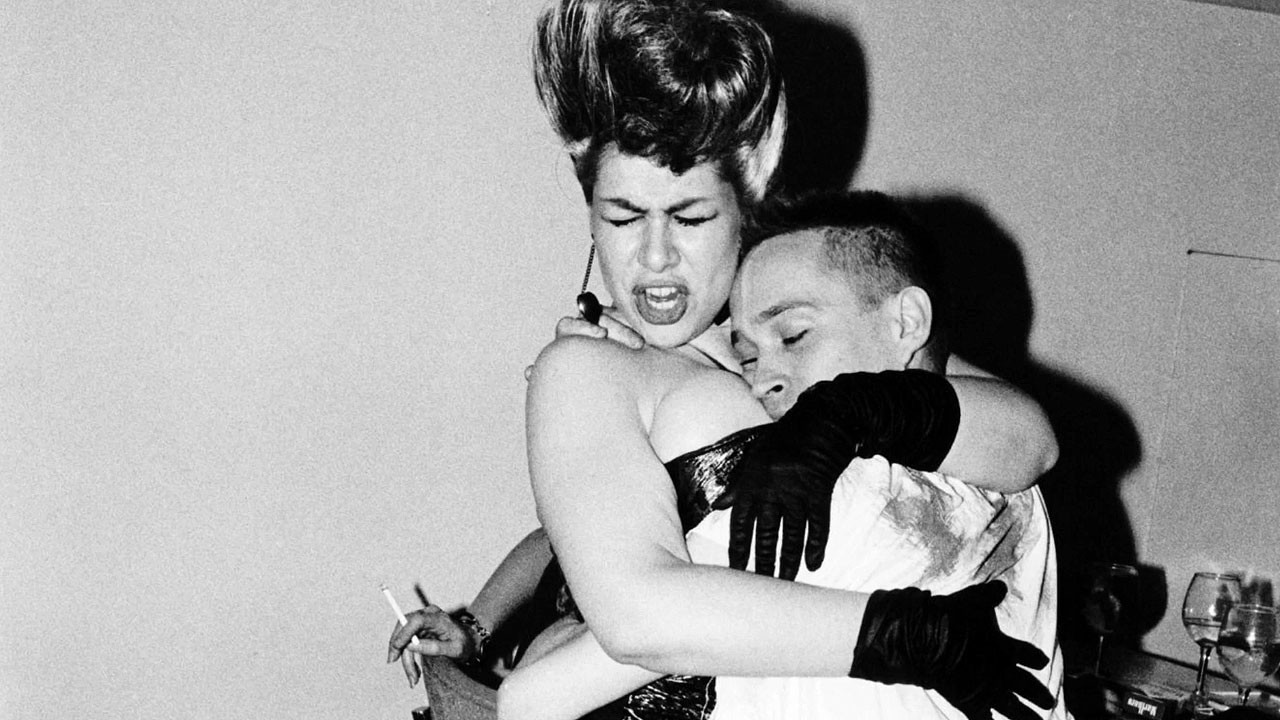Photographer Jill Freedman’s love affair with Ireland started with music. Before she became a photographer, she was a 20-something making her way through Europe in the early 1960s as a performer. She sang in bars and on the BBC's Tonight show. While in Ireland, she checked out a traditional Irish music festival, the Fleadh Cheoil, in Dublin. She didn’t know the music well but was moved by its traditional instruments, simple vocals, complicated rhythms, and sense of community.
Advertisement
Moreover, Freedman was touched by the kindness of the Irish people, which surprised her since she'd grown up fighting with Irish-American kids in Pittsburgh, who tormented her on the way home from school because she was Jewish.Back home in the States, she found herself missing Ireland, and more generally, the music and the accents of the British Isles. While working as a copywriter in New York City, Freedman started seeking out Irish enclaves like Malachy's Donegal Inn, a lively bar owned by Malachy McCourt, a charismatic local figure known for his storytelling. It would be many years before he and his brother Frank would become internationally known for their books about growing up poor in Ireland and trying to make it in America. The most famous of their books is Frank's bestseller, Angela's Ashes, published in 1996 and made into a film in 1999.
Malachy McCourt became a friend and would humor Freedman with talk in the Irish brogue, but it wouldn't be until 1972 that Freedman would return to Ireland. By then, her budding fascination with photography had turned into a vocation. She was immersed in the West Village's art scene, spending most of her time on the streets shooting photos or holed up in her dark room. When she would go out, it would be to the literary hub of the Lion's Head Bar, or "the Head," where she'd often see Frank McCourt, who was still a teacher and aspiring novelist. James Baldwin supposedly told the novelist Robert Ward that the Head was the last place that "felt like the old days." Freedman remembers that the only music on the bar's jukebox was jazz, with the volume set very low, which they "wouldn't turn up for anybody."
Advertisement
At the Head, Freedman made a transformative connection with a young man named Jack Deacy. Raised in Brooklyn by Irish immigrant parents, Deacy was jobless but aspired to write, and he would go on to become a journalist and political spokesman. When Deacy sauntered up to Freedman at the bar, he complimented her on her book about the 1968 Poor People’s Campaign. Continuing to talk, they became fast friends, and soon Deacy would take Freedman deep into Ireland.
Every summer, Deacy visited Ireland to lend a hand on his Uncle Paddy's farm in County Leitrim in the village of Drumkeeran. As Freedman made plans to go back to Ireland, camera in hand, she and Deacy made plans to meet. In Drumkeeran, Deacy introduced Freedman to Paddy, and knowing she was searching for the music she'd fallen in love with in Ireland, referred her to a pub owner named Angela Moloney, who ran Moloney's Pub on the south side of Listowel. Moloney also took Freedman under her wing, and let her stay in the pub's upstairs guest room while she visited.

Ensconced by this welcoming group of friends, Freedman had access to the rich cultural corners of Irish society. Freedman later reminisced that she was seeking "the old ways"—homespun, intimate traditions passed down through generations. Seeking these magical moments brought her back to Ireland six more times between 1973 and 1988.

Ensconced by this welcoming group of friends, Freedman had access to the rich cultural corners of Irish society. Freedman later reminisced that she was seeking "the old ways"—homespun, intimate traditions passed down through generations. Seeking these magical moments brought her back to Ireland six more times between 1973 and 1988.
Her photos from this time show the beauty and grace of Ireland—she chose not to photograph the political violence surrounding The Troubles, which was tearing Northern Ireland apart at the time. One notable exception is a seemingly mundane street scene. But the handwritten sign on the table in it encourages passerby to express their condolences for Michael Devine, one of the founding members of the Irish National Liberation Army (INLA) who died in prison during a 1981 hunger strike. Freedman had no idea that at the height of The Troubles, Deacy had gone to the epicenter of the violence in Northern Ireland to cover it as a conflict reporter.
Advertisement
During one of our recent conversations, she learned of Deacy's involvement and was frank about her disgust of the violence. “I didn’t go North. I didn’t want to be around it," she said. "I had the violence of the streets [in New York], so I didn’t need to go looking for it. Besides […] I really hate terrorists. I mean, blowing up a pub with kids in it? Fuck you! You’re nothing but a murderer."Instead, Freedman took photos of peace, affection, grace, and the music. One of her strongest is her iconic shot of fiddler Johnny Doherty bathed in light, while accordionist Joe Burke shares a laugh with a friend behind him. The images canonize the camaraderie and celebration found in Irish pubs.
But traveling to Ireland so frequently and shooting on analog film had financial drawbacks. One day, while visiting with her friend the photographer Aaron Siskind, Freedman confided that she wanted to go back and continue working on her Ireland series but didn't have the money to do so. By this time, Siskind was comfortably established, and with little fanfare he wrote Freedman a check for several thousand dollars and told her to go finish the work.
By 1987, Freedman had amassed enough photos for a book, and she published A Time That Was: Irish Moments under the imprint Friendly Press. The photos were also presented in a 1988 show at the International Center of Photography. Unfortunately, Freedman said the book got little publicity, and she felt adrift not knowing if the work was as affecting for other people as it had been for her while shooting it.
Advertisement
A second chance for the Ireland photos came in 2004, when Abrams Books agreed to publish an expanded selection of works if Freedman could get Frank and Malachy McCourt to write a foreword. The brothers accepted, and Ireland Ever received a much wider release. Still, it would be several more years before Freedman felt the photos made the impact she wanted, albeit in a small and personal way.
In 2000, NYPD Officer Rita Mullaney saw Freedman give a talk at the National Arts Club. An aspiring photographer herself, Mullaney had been intrigued by Freedman since learning about her book Street Cops. Unbeknownst to the duo, they already shared a connection: Mullaney was close with Malachy McCourt's son Conor, who was also an NYPD cop.When Mullaney introduced herself to Freedman afterwards, she wound up standing next to Deacy. As Mullaney explained that she was Irish-American and grew up in Bay Ridge, Deacy realized Mullaney's father owned one of the neighborhood's original Irish bars, which seemed to be fading away. The conversation flowed naturally from there, and over time Freedman became like adopted family to Mullaney—with friends and relatives coming to call her "Aunt Jill.”
Fast forward to 2017: Mullaney's cousin Theresa Hamilton was in love with a man named Dan Scales who was vacationing in Ireland. One night Scales sent Hamilton a short video of traditional music in O’Connor’s Pub in the village of Doolin, which she shared with Mullaney, who then shared it with Freedman. Watching it together, the two women were shocked to recognize a familiar photograph in the background. Framed on the wall of O'Connor's Pub is Freedman's group shot of musicians at Moloney's in 1981, decades earlier.
Advertisement
That's how, more than 50 years after Freedman fell in love with traditional Irish music, her work was now presiding over the nook in a bar in Ireland where only musicians are allowed to sit. Displayed in this setting, surrounded by strangers practicing the art form that had so enchanted her, Freedman felt that after all the trekking and exploring, her work shot in Ireland had finally struck the right chord. The photo was claimed by the music as its own.
Jill Freedman's works are included in the permanent collections of the Museum of Modern Art, the International Center of Photography, and the George Eastman Museum, among others. With photographic interests in both social science and humanism found in the streets, Freedman makes regular posts to her Instagram account @jillfreedmanphoto and is represented by Steven Kasher Gallery, New York. She has recently released a new photobook of her documentation of the Poor People’s Campaign with Grafiche Damiani, and intends to publish more books to augment works like Firehouse and Street Cops, which were featured in Cheryl Dunn's 2013 documentary on street photographers, Everybody Street.Sign up for our newsletter to get the best of VICE delivered to your inbox daily.
